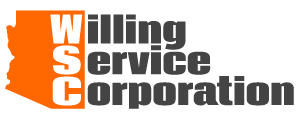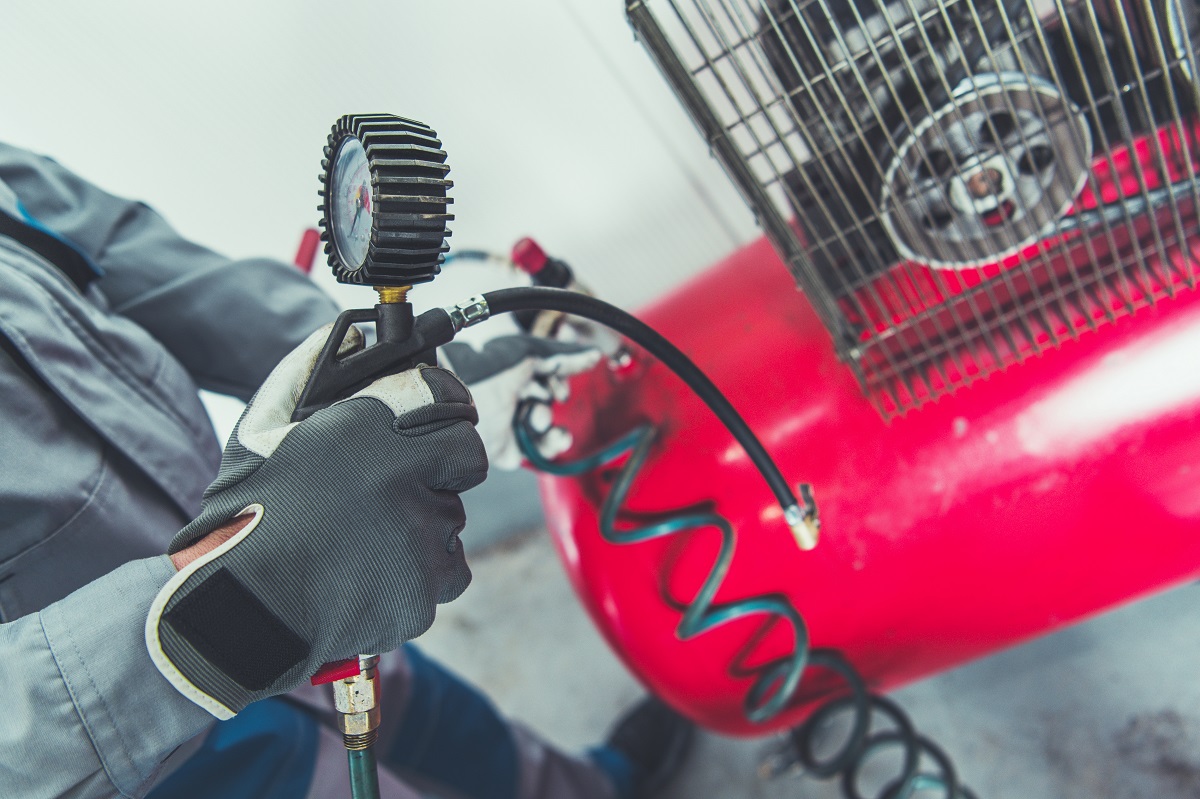If you’re interested in how reciprocating air compressors work you likely own one and might be troubleshooting. This post will help you understand how a reciprocating air compressor works and might give you insight into what is wrong with your air compressor. Click here for more detailed information on: air compressors that are making loud noises.
Reciprocating Air Compressor Stages
A reciprocating air compressor is classified by stages that assist with understanding how a reciprocating air compressor works. While each type has the same operation principles, each compressor classification discharges pressure differently.
A reciprocating style compressor uses pistons that enclose inside a cylinder and are equipped with discharge and suctioning valves. The pistons receive the power sent by a main shaft by a connecting rod and crankshaft. The crankshaft is fitted with a belt wheel/flywheel. A diesel engine or electric motor powers these components through operation cycles, supplying a uniform motion.
First, the air compression is conducted from a volume of air being drawn into the cylinder by suctioning valves that are stroked by pistons. The return stroke is then compressed and discharged during the return stroke using delivery valves.
All reciprocating air compressors use this simple process. Below is more information that will help you easily understand the process of compressor engineering.
The Process of Single Stage Reciprocating Air Compressors
With whole compression is conducted within a single cylinder when using a single stage reciprocating air compressor. If compression becomes affected with an end of the cylinder and piston, this is referred to as a single act. However, if compressions affect both ends of the cylinder and piston, this is referred to as a double-act reciprocating air compressor.
A simple check valve (spring or plate valve) opening and closing is determined by the pressure difference. When using mechanically operated valves with suctioning and discharging, cams control its functions. The cylinder’s air weight is zero when a piston is at the top center. In this position, clearance volume will be neglected.
As the piston begins to move downwards, pressure in the cylinder decreases under atmospheric pressure and the inlet valve/suctioning valve will open. Air gets drawn in the cylinder by a suctioning filter, an operation referred to as a suctioning stroke.
As the piston begins to move upwards, air within the cylinder compresses and the inlet valve will close as pressure reaches atmospheric pressures. Additional compression occurs when a piston moves to the top of the stroke until the cylinders pressure exceeds the pressure of the receiver. This is the compressor’s compression stroke in action, ending with the stroke discharging and delivery valve opening to let air reach the receiver.
With a double-act reciprocating air compressor, the process of a suctioning stroke occurs at one end, while discharging stroke takes place at the opposite end. Therefore, it can be said the suctioning and compression process occurred at both ends of the cylinder and piston within double-act reciprocating air compressors.
The Process of Double-stage Reciprocating Air Compressors
A two stage or double-stage reciprocating air compressor have two cylinders. There is a low-pressure cylinder, and a high-pressure cylinder. When a low-pressure cylinder has a piston at the outer dead center (ODC) the air weight inside the cylinder is at zero, which neglects clearance volume. When the piston begins to move to the inner dead center (IDC) pressure decreases under atmospheric pressures and the suctioning valves start to open from the difference in pressure.
The low-pressure cylinder draws air in the air suctioning filter. The new air is compressed further by the pressure and piston inside and outside the cylinder, causing suctioning valves to close. When pistons move to ODC air compression occurs. When air pressure ranges between 1.5 kg/cm² and 2.5 kg/cm² the delivery valves open and the compressed air enters the high-pressure cylinder via intercooler. This is referred to as low-pressure compression.
In the event suctioning and discharge stroke occurs on both ends of the piston, this is referred to as a double-act low-pressure compression.
A high-pressure cylinder’s suctioning valves will open as air pressures lower under the receiver pressure while the air of a low-pressure cylinder is forced into the high-pressure cylinder. When pistons move to ODC, the air is compressed further in the 1st stage. As air pressure travels between a low-pressure cylinder and high-pressure cylinder to create an equal pressure the suctioning valve closes.
The piston has compressed the air further to the point the high-pressure cylinder has exceeded the pressure level of the receiver and discharge valve, causing it to open. The high-pressure air then gets sent to the receiver as desired.
Each operation cycle repeats this procedure. When suctioning and discharge strokes occur on both ends of a piston, it is referred to as a double-act high-pressure compression. Within the double-stage, a reciprocating air compressor’s air develops within the range of 5.5 kg/cm and 35 kg/cm.
Usually, air pressure is required to be above 7.0 kg/cm² and air delivery above 100 cubic ft/min. In this case, a double-stage reciprocating air compressor is utilized. Among different engineering plants, this is the most common model.
When air pressure is required to be above 35 kg/cm², a double-stage reciprocating air compressor is no longer a useful approach. In this case, a multiple stage air compressor is needed.
The Process of Multiple Stage Reciprocating Air Compressors
There are certain industries which will need air pressure to be above 35 kg/cm² for producing products. For instance, mineral water bottles made from PET blowing will require air pressures to reach over 40 kg/cm² for producing a desired shape on the bottom of the bottle.
In these situations, a double-stage reciprocating air compressor will not be beneficial, as it is unable to provide the air pressure levels required. Therefore, a multiple stage air compressor is used for discharging air pressure.
Usually a three-stage reciprocating air compressor is used in situations that require a multiple stage air compressor. Within these type of air compressors, the fresh air enters the 1st stage (low-pressure cylinder) through a suctioning filter.
The air is then compressed to 4 kg/cm² by a piston and sent to the 2nd stage (middle pressure cylinder) via intercooler to compress air further. During this stage, suctioning and compression will take place at either end of the piston.
The cylinder’s 2nd stage compresses low-pressure air up to 14 kg/cm² and discharges it into the 3rd stage (high-pressure cylinder) using a 2nd intercooler for reaching desired air pressures upon delivery. In this stage, the compression and suctioning take place on a single side of the piston.
Within the high-pressure cylinder, air pressure of 14 kg/cm² is raised to the desired range of discharge, between 35 kg/cm² and 85 kg/cm² from the piston reciprocating within the cylinder. During this stage, suctioning and compression take place on either end of the piston.
There are few industries that use multiple stage reciprocating air compressors, such as COMPRESSED Natural Gas Centers (CNG), and PET blowing. These are all high-pressure compressors manufactured by Chicago Pneumatics, Atlas Copco, and Ingersoll Rand in India.
Reciprocating Air Compressor Sales & Repair
If your company needs to buy a reciprocating air compressor or you need to have one repaired Willing Service Corporation is here to help. We offer the top brands of air compressors including BOGE, FS Curtis, DV Systems, Chicago Pneumatic, Great Lakes, and Hankison. Call to talk with our helpful staff to choose the air compressor that will fit your location and your needs for compressed air at (602) 246-6940.




